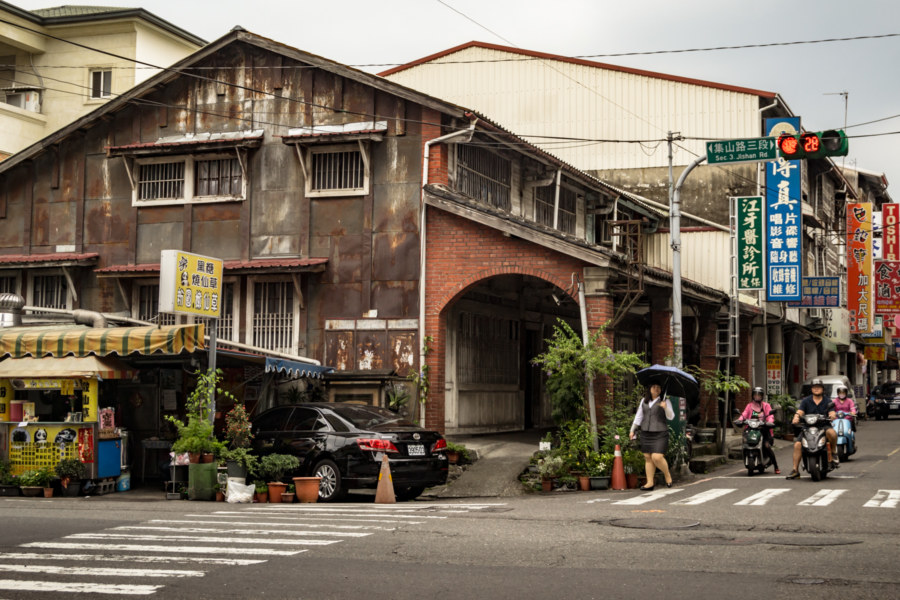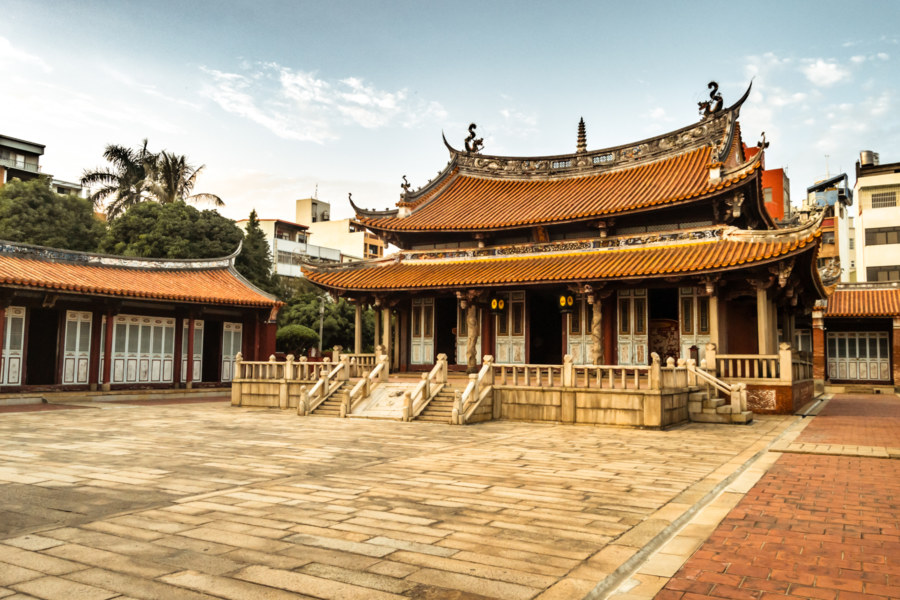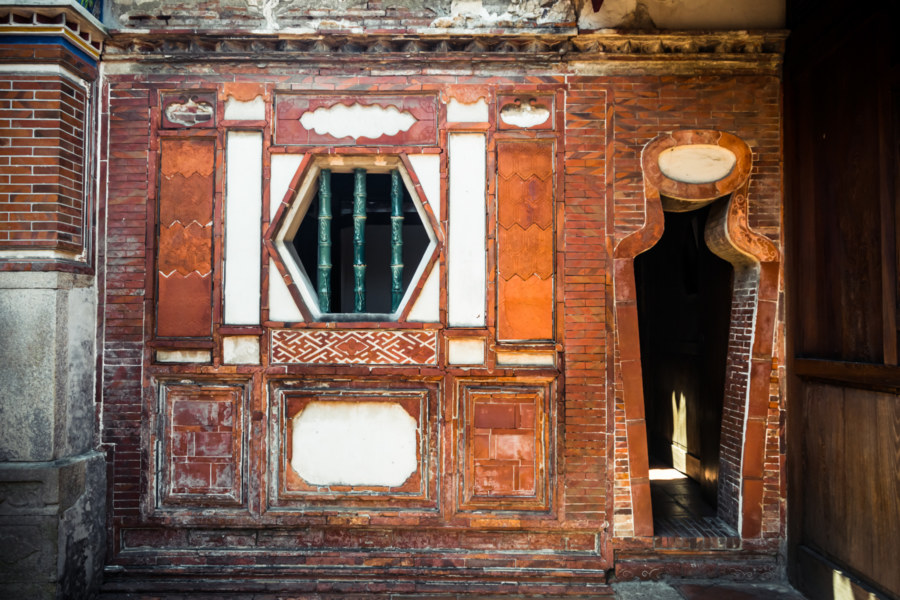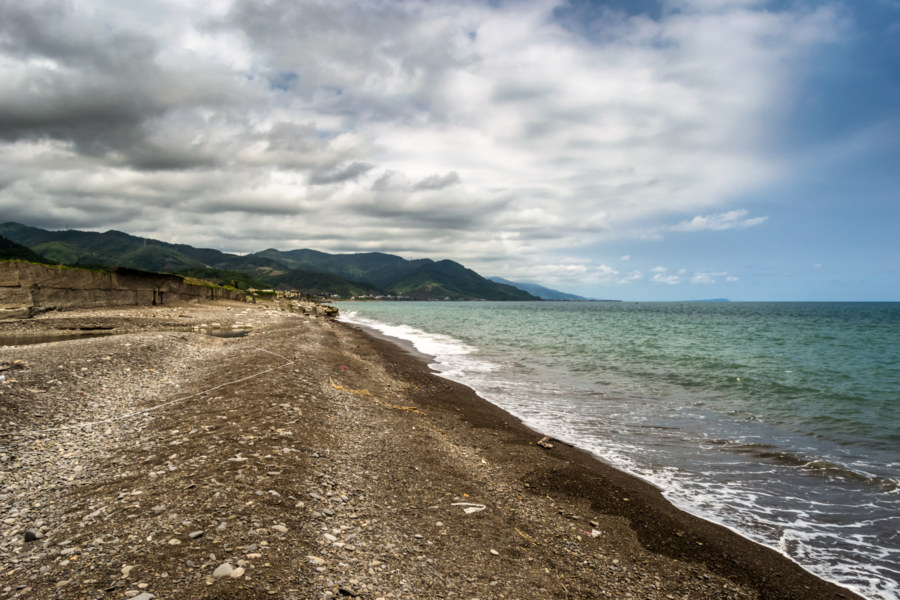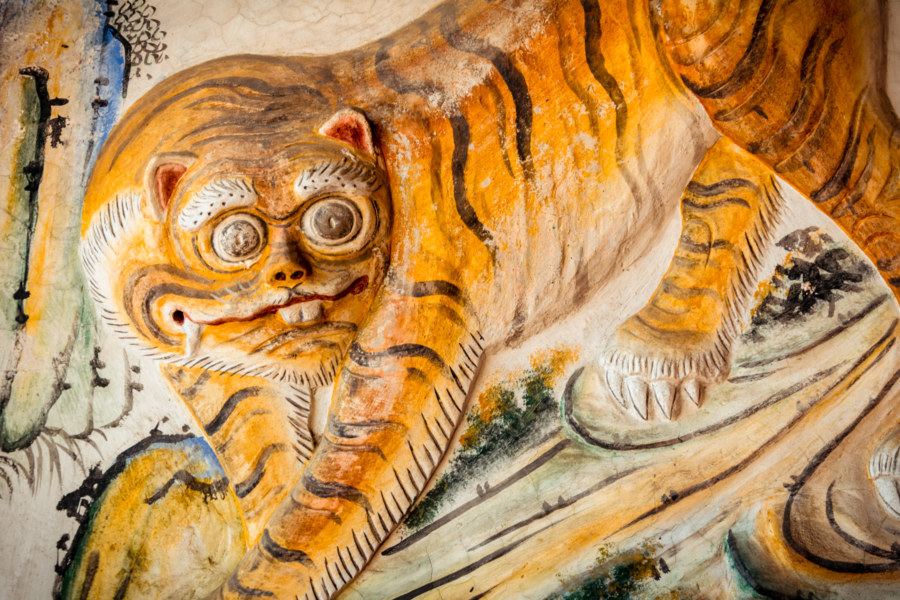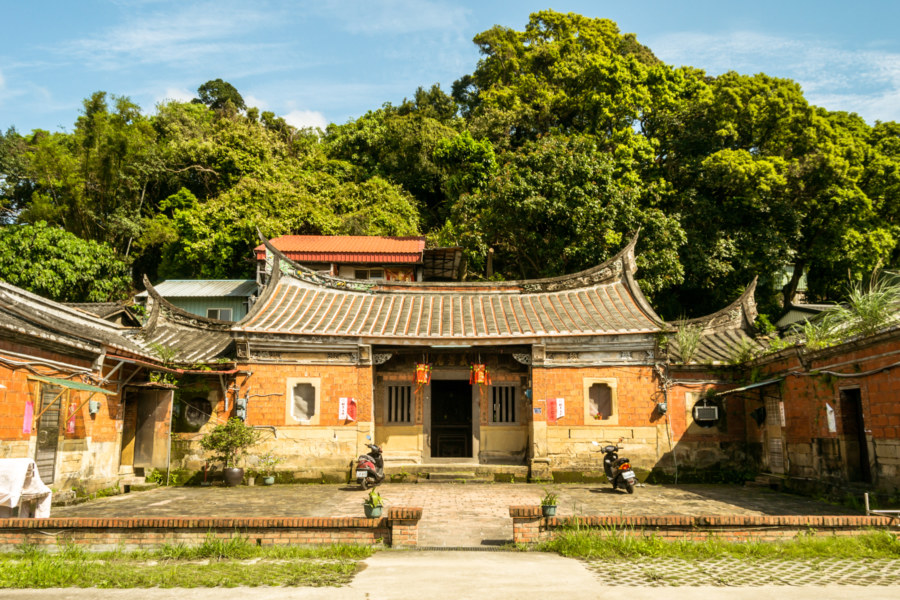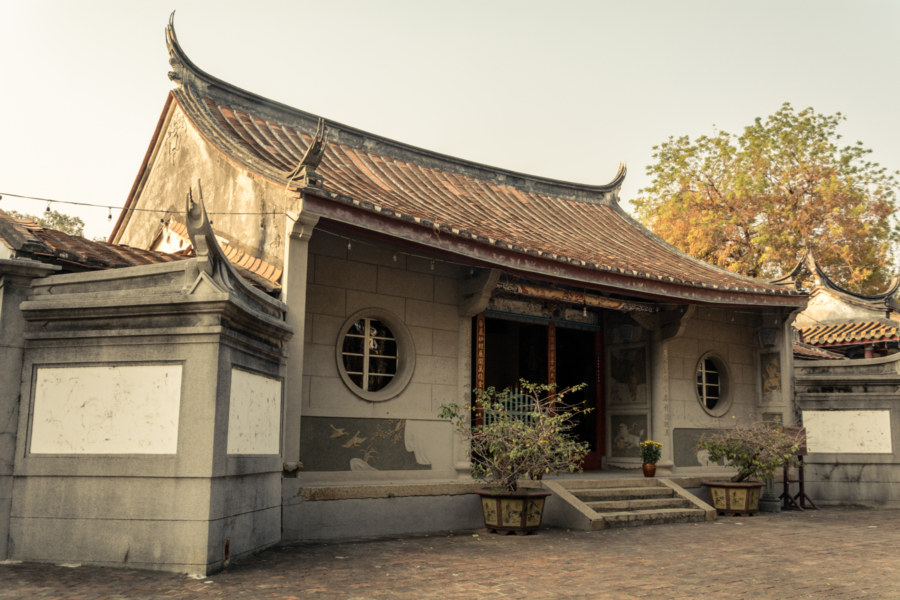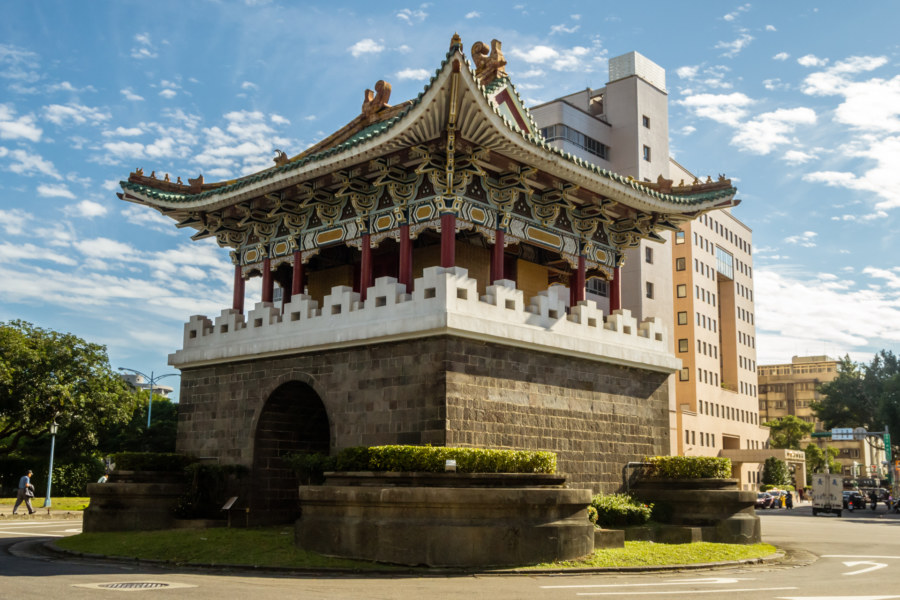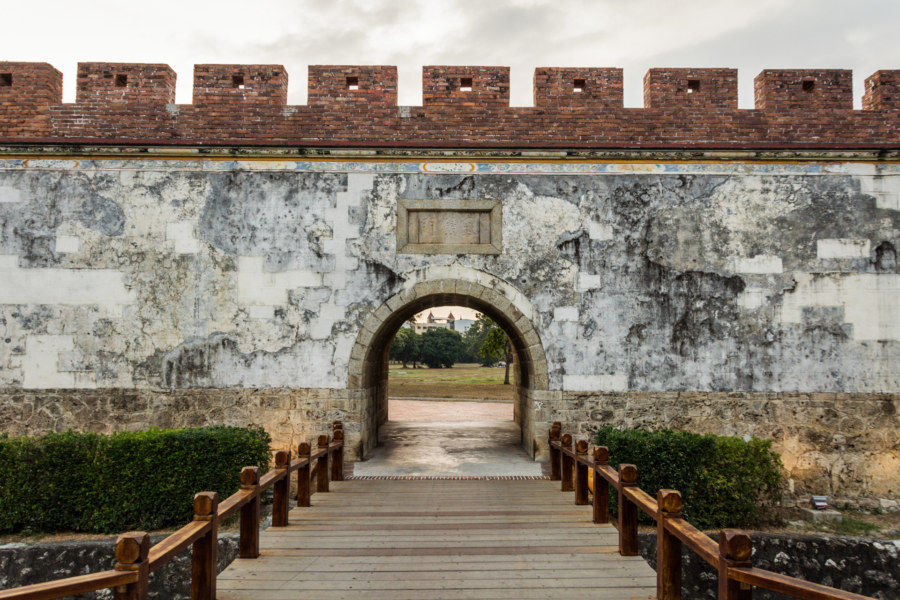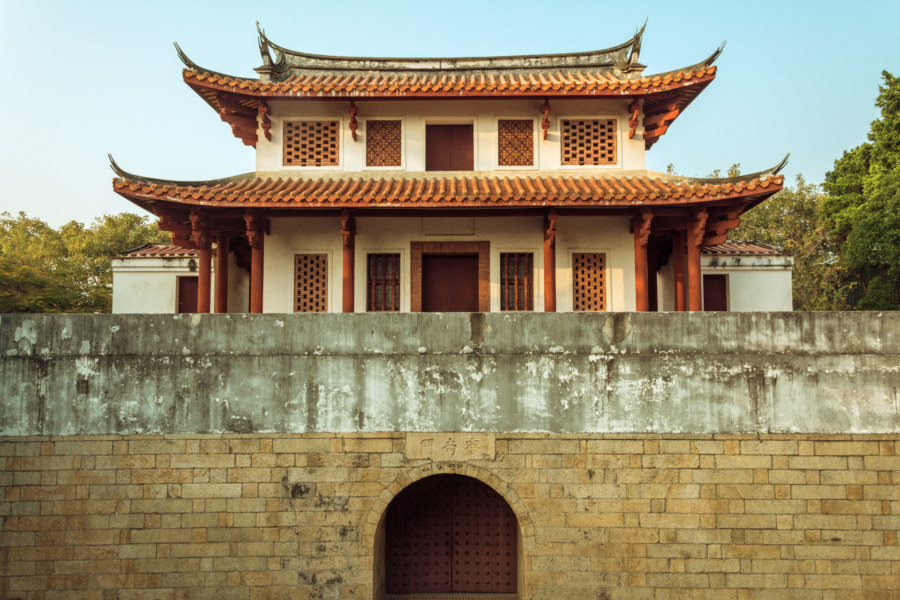Zhushan (literally “Bamboo Mountain”) is a historic yet obscure township in southwestern Nantou mainly known for cultivating tea and bamboo. The town itself is one of the oldest in central Taiwan but it hardly feels that way. Many of Zhushan’s most historic structures were destroyed or damaged beyond repair in the devastating 921 Earthquake that struck in 1999, which is why its “old street” is lined with modern buildings. Most travellers pass through Zhushan on the way to attractions deeper into the rugged interior of Taiwan without sparing it a second glance—but I stopped for a closer look in the summer of 2017 while on an impromptu road trip. After staying the night in a sleazy love motel never meant for sleep (there was no way to switch off the lights) I wandered around in the morning haze, capturing traces of Zhushan’s history as it disappears into memory.
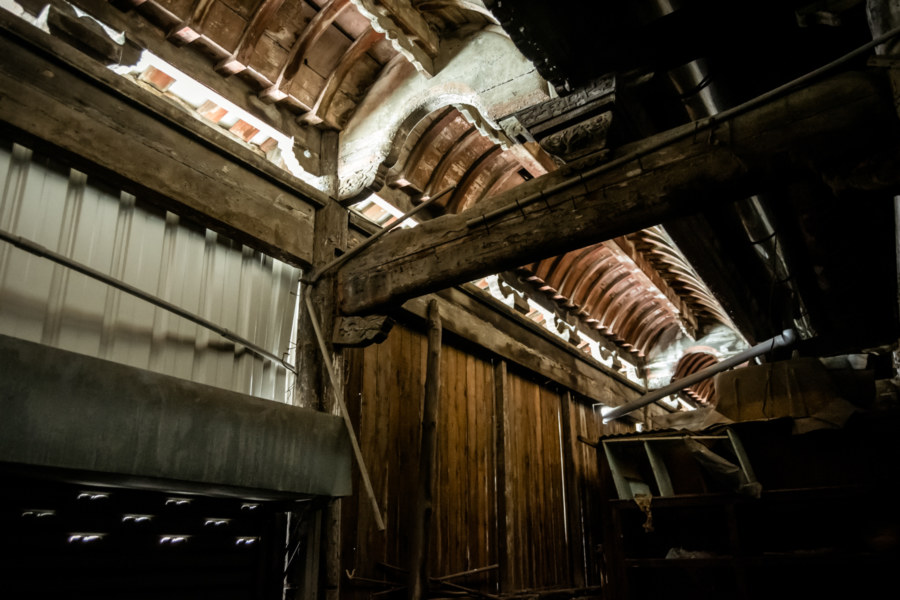
Much of Taiwan was ruled by the Qing Dynasty (清治時期) from 1683 until 1895 when Japan acquired Taiwan and Penghu in the aftermath of the First Sino-Japanese War. At this point the Japanese colonial era begins.
Postcards From Changhua City 2 彰化市明信片二號
Not long after moving to the administrative capital of Changhua in 2014 I published a collection of photographs entitled Postcards from Changhua City. All of the photos in that post were shot in my first few months of residency but I ended up staying for half a year. In that time I gathered more than enough material for a sequel while making my daily rounds. So here it is: more photos from my time in Changhua City, a historic town in central Taiwan. As before, additional information and links are included in the caption for each photo, where available.
Huangxi Academy 磺溪書院
Built in 1887, Huángxī Academy 磺溪書院 is one of dozens of Qing dynasty era schools of classical studies in Taiwan. Located in Dadu, a small town in southwestern Taichung, it provides a window into a time when scholarship was more closely interwoven with spirituality. Apart from classrooms and areas for quiet study the academy also has an altar to the Five Wénchāng 五文昌: Kuí Xīng 魁星, Zhū Xī 朱熹, Guān Yǔ 關羽, Lǚ Dòngbīn 呂洞賓, and, of course, Wénchāng 文昌 himself. Collectively these Taoist gods represent classical Chinese culture and several are commonly venerated by students prior to writing exams. Structurally the academy follows a plan similar to a traditional Taiwanese courtyard home or sanheyuan with the addition of a large gatehouse and pavilion.
Southern Taiwan Ride 2015: Fangliao to Manzhou
Last summer I embarked upon a weeklong bicycle tour in the deep south of Taiwan. I began in Tainan, cycled through Kaohsiung to Pingtung City, spent a day hanging out, and then continued on to Fangliao, where the coastal plain narrows to a thin wedge between the mountains and the sea. There is only one road leading south from here—which meant I covered a lot of ground I had already seen while riding all around Taiwan in 2013. I didn’t mind repeating that beautiful stretch of coastline and, actually, I was looking forward to checking out some places I had breezed by on that first big tour, particularly in Fangshan and Hengchun.
Daodong Academy 道東書院
Dàodōng Academy (道東書院) is one of many Qing dynasty era academies scattered across central and southern Taiwan. Located in Hemei in Changhua, it was built in 1857, the 7th year of the Xianfeng Emperor (清咸豐七年), and operated as a private school devoted to classic Chinese literature, philosophy, and ethics, among other subjects. Commonly known to locals as Wénmiào (文廟, “Temple of Literature”), the academy also venerates Song dynasty scholar Zhū Xī (朱熹) and Kuí Xīng (奎星), the god of examinations.
Yifang Old House 義芳居古厝
Yìfāng Old House (義芳居古厝) is a traditional courtyard home, or sānhéyuàn (三合院), in the scenic foothills of southeastern Da’an, Taipei. It was built in 1876 during the Qing dynasty era by a wealthy branch of the Chen family. At that time it was far from the commercial centers of Wanhua and Dadaocheng, both near the other side of Taipei Basin, on an almost lawless frontier. Nowadays this old house is a stone’s throw away from some of the busiest streets in the city as it is located immediately behind the National Taiwan University (國立臺灣大學) campus, better known as Táidà (台大).
Tainan Fahua Monastery 台南法華寺
Last year I briefly visited the historic Fahua Monastery 法華寺 in Tainan. Like many of my explorations of temples in Taiwan this one wasn’t planned in advance. I noticed the monastery from the roadside while riding through the back streets south of the train station and stopped to check it out on a whim. As it turns out, Fahua Monastery has quite a long and distinguished history—going all the way back to 1684—and the interior is unusually minimalistic and serene compared to most other temples I have visited here in Taiwan.
Taipei Xiaonanmen 臺北府城小南門
Today is winter solstice, the shortest day of the year in the northern hemisphere, and it is a record-breaking 30°C in Taipei. In Chinese culture it is customary to consume tāngyuán (湯圓, glutinous rice balls typically immersed in hot, sweet soup) on winter solstice, better known to locals as Dōngzhì (冬至), a time when families gather together and celebrate growing one year older. Since I have no family here I will be lining up at 36 Yuánzǐ Shop (三六圓仔店) for a bowl sometime later on—though I might just skip this particular ritual if the line-up is too crazy. Two years ago I was informed, contrary to expectations, that you won’t actually age without eating tangyuan on dongzhi. If I miss it this year I suppose I won’t mind.
The Old Walled City of Zuoying 鳳山縣舊城
A month ago I embarked upon a day trip to Zuoying to check out the famous temples and pagodas of Lotus Pond 蓮池潭, one of the main tourist attractions of greater Kaohsiung. Afterwards I wandered over to have a look at the old city of Zuoying 左營舊城, originally built in 1722 by the ruling Qing Dynasty in response to the many uprisings that regularly plagued Taiwan Prefecture 臺灣府.
The Great Southern Gate of Tainan 臺灣府城大南門
Nanmen, Tainan’s great southern gate.
Dànánmén 大南門, also known as Níngnánmén 寧南門, is one of two great gates remaining in Tainan, the most historic city in Taiwan. Built in 1725, it has been renovated several times but maintains its classical charm. Nowadays it can be found in a gorgeous park just south of the Confucius Temple on Nánmén Road 大南路. The gate itself is surrounded by a secondary fortification, a barbican or wèngchéng 瓮城, which provides additional defensive capabilities. As usual, Tainan City Guide has an excellent write-up about this historic landmark.…
